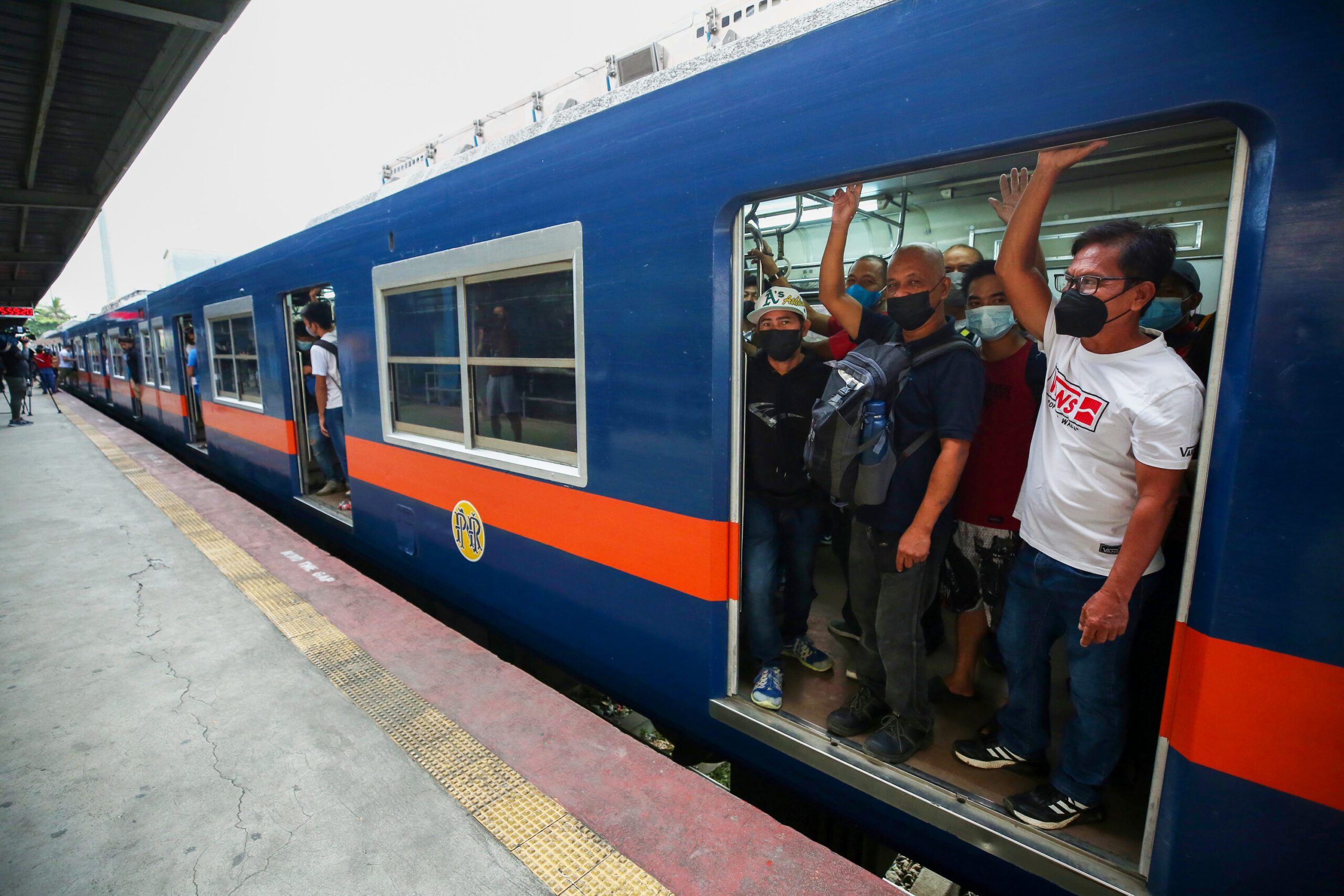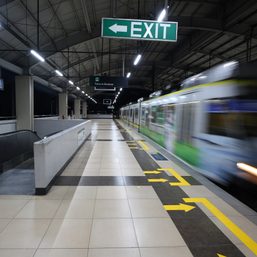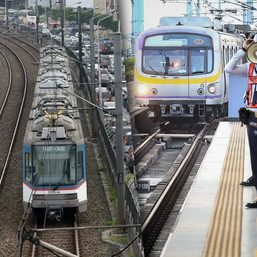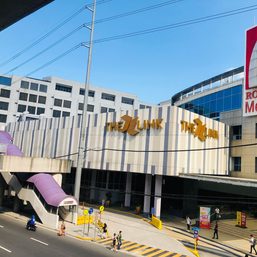SUMMARY
This is AI generated summarization, which may have errors. For context, always refer to the full article.

MANILA, Philippines – The stalled loan negotiation between China and the Philippines is threatening to derail the PNR South Long Haul project, but the government isn’t ready to give up on its dream of a railway in south Luzon just yet.
At its peak in the 1970s, the Philippine National Railway (PNR) used to stretch from La Union in the north of Luzon all the way to Legazpi in the south. But after decades of neglect, the railway’s dilapidated tracks and rusted trains now only serve about 130 kilometers.
That’s where the PNR South Long Haul comes in. In its first phase, the planned railway project would build on the old “Bicol Express” line, stretching from Calamba, Laguna all the way to Daraga, Albay.
Phase 2 would extend it up to Matnog, Sorsogon, while phase 3 would link Quezon to the Port of Batangas. The Department of Transportation’s long-term plan is to connect the South Long Haul into the North-South Commuter Railway (NSCR) that reaches all the way to New Clark City in Central Luzon.
But plans to revive the PNR South Long Haul keep getting off track. After sealing a P142-billion contract with Chinese contractors in January 2022, the Philippine government has been stuck in talks with China for a loan to actually finance the project.
As negotiations continue to fail, these grand ambitions remain a pipe dream.
Why do we need a loan?
Under the 2024 transportation budget, the PNR South Long Haul is alloted P3 billion. But unless the government succeeds in getting a loan, the railway won’t have enough funds for actual construction works to continue.
That’s because the massive project could cost about P175 billion – tens of billions more than the government has to spare. For this reason, the original plan was for China to provide official development assistance (ODA). The Chinese loan would cover construction costs while the Philippine government would take care of obtaining right of way and relocating informal settlers.
“In the negotiations, the whole South Long Haul – civil works and electromechanical works – will be financed by supposedly the official development assistance. The right of way acquisition and relocation of informal settlers will be funded from local funds, by the Philippine government,” PNR general manager Jeremy Regino told Rappler on Thursday, October 19.
This wouldn’t be the first time that the Philippine government has turned to foreign governments for big-ticket rail projects like this.
Japan, through the Japan International Cooperation Agency (JICA), has historically been one of the country’s top providers of ODA. JICA also funded the rehabilitation of the MRT3, and notably, the Metro Manila Subway.
Then, under the Duterte administration, the country began fueling a lot of its infrastructure projects using loans from China. Chinese money has funded projects like the Kaliwa Dam and Samal-Davao bridge.
But Beijing has a different process when it comes to granting loans. For Japan-funded projects, the loan agreement is signed first before bidding commences. With China, a project must already have a contractor and project management consultant before loan negotiations can start.

Why won’t China grant the loan?
The government has been struggling for years to agree on terms with China for the project’s funding. Right now, the Philippine government is negotiating for a loan with an interest rate of 2.5%, lower than the 3% interest rate in the original proposal.
“The negotiations started during the time of the previous administration under President Duterte. But just like before, the negotiations [now] did not prosper at once because there was a deadlock on the rate of interest,” PNR’s Regino told Rappler.
During the previous Duterte administration, then-finance secretary Carlos Dominguez III withdrew the Philippines’ loan application after inaction from the side of the state-owned Export-Import Bank of China (China Eximbank).
Rail Transportation Undersecretary Cesar Chavez said that the Marcos administration has tried to restart negotiations with China Eximbank, but talks have so far produced “no clear direction.”
“There was no loan approved, granted by the China Eximbank, and therefore there is no civil works contract,” he said during the House committee hearing on the Department of Transportation’s 2024 budget.
Where do we get funding now?
Regino said the government is preparing contingencies in case it must look for other sources of funding to continue the railway.
“The Department of Transportation, together with the Department of Finance, is trying to study and evaluate and weigh other options for other official development assistance to come in and pursue the project for the South Long Haul,” Regino told reporters on Tuesday, October 17.
He added that they are following a timetable. If the Philippine government is unable to secure a loan from China, then it could seek funding from the Asian Development Bank, JICA, or even the private sector.
Should the government opt to go with the private-public partnership route, then it may have to combine the offer with ODA or state participation, given the relatively lower return on investment from the railway project.
“All options are being considered,” Regino said. “If [negotiations are] not concluded, then we will have to look for other options rather than continuously waiting for a China-funded South Long Haul project.”

What do we do in the meantime?
According to Regino, the South Long Haul is already behind schedule.
“There’s a delay in the timeline because the negotiations are still ongoing,” he told Rappler. “It was supposed to start before the pandemic.”
In the meantime, those living in the southern parts of Luzon may still benefit from routes that are gradually reopening. With PNR trips in the National Capital Region paused to give way to the NSCR’s construction, trains from the metro will be brought back to revive the PNR Bicol line.
The PNR is aiming to resume the Naga-Legazpi route by December 2023, and hopes to get the entire Calamba-Legazpi route operational by the first half of 2024.
“We will cater to the needs of the riding public in the south while the South Long Haul funding negotiations are still ongoing,” Regino told Rappler.
Fixing up the bridges and tracks used by these routes will help too in the eventual construction of the South Long Haul. That’s because about 60% of the PNR Bicol’s old alignment will be used for the planned railway. However, some of the old tracks will need to be replaced since the bigger, faster trains – packed with tons in freight – wouldn’t be able to run along the sharp curves.
Still, the government must first solve the problem of funding. For the PNR general manager, getting China to agree may boil down to “how badly or how enthusiastically China would want to pursue the project.”
“Principally, it’s the rate of interest as well as the priorities of the Chinese government to choose which projects they would want to finance and pursue,” he said. – Rapppler.com
Add a comment
How does this make you feel?





There are no comments yet. Add your comment to start the conversation.